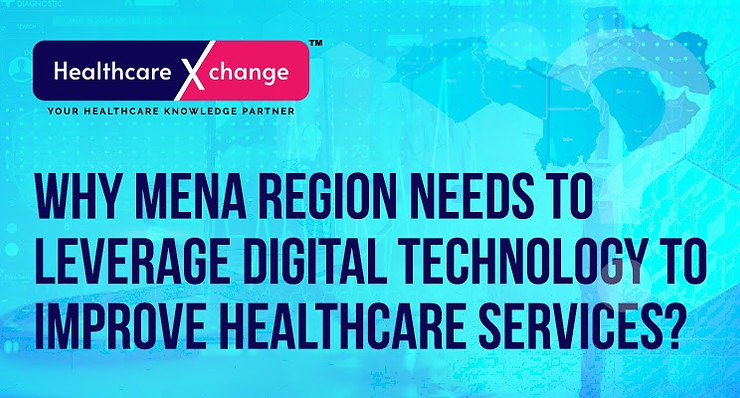
Why MENA Region Needs to Leverage Digital Technology to Improve Healthcare Services?
- Healthcare and General Service
- October 15, 2024
Highlights
-
Healthcare sector in the MENA region facing challenges related to population, cost, expertise, chronic disease burden and harsh geography
-
Digital technology is well positioned to address issues with personalised, cost-effective and precise treatment methods
-
AI-powered tools expected to transform diagnostics and delivery of medical services
The healthcare sector in Middle East and North Africa (MENA) is currently in a state of flux amid a fundamental transformation in how medical services are delivered. A heavy burden of non-communicable diseases (NCDs) and increasing expectations have changed the industry’s dynamics.
The main factors impacting the region’s health systems are:
-
Rapid population growth
-
Shortfall of skilled healthcare workers
-
Increasing cost of medical services
-
Rise in chronic or non-communicable diseases
-
Changes in diagnosis and treatment methods
-
Isolated communities separated by difficult geographic terrain
Population growth rate
The Middle East and North Africa population is expanding at a rate of 1.5% per year. The rate of growth is one of the highest in the world after sub-Saharan Africa. As the region’s population increases, the geriatric or elderly demographic too rises in proportion. The local healthcare systems at present lack the capacity to provide the requisite quality of service.
Healthcare leaders affirm that healthtech or digital technology is best placed to resolve the issues facing the industry. Elie Chaillot, President and CEO, International at GE Healthcare, agrees that digitalisation is crucial in standardising and improving clinical workflows, thereby reducing errors as well as expenses.
Healthtech innovations such as AI-powered diagnostics and wearable devices like GE Healthcare’s Portrait Mobile offer significant scope for providing personalised care. For instance, healthtech firm Innovaccer recently unveiled InScribe, an AI tool to streamline operational activities in the UAE. Such platforms help clinicians to focus on high-value patient-centric care in ambulatory contexts and reduce time spent on mechanical tasks such as documentation.
Chronic disease burden
A change in socio-economic factors has augmented the incidence of chronic diseases in the MENA region. Non-communicable or chronic conditions account for about 70% of mortality with cardiovascular ailments, diabetes and cancer making up most of the disease burden.
It has necessitated a shift from conventional methods to a technology-driven approach for quick diagnosis, perennial monitoring and personalised treatment. Digitalisation of health systems enables quick integration of patient information from multiple databases. Clinicians can gain insights from data obtained via AI-powered medical imaging, pathology and genomics for precise diagnostics to initiate tailored treatment plans.
For example, Oman has allocated resources within the budget to provide electronic sensors and insulin pumps for children with type 1 diabetes. The initiative aims to improve the quality of life of diabetics with automation of blood sugar levels monitoring and remedial steps before the onset of a hypoglycemic episode.
Lack of sufficient workers
The MENA region also suffers from an acute shortage of healthcare staff with most of the workforce comprising of expatriates and migrants. Abu Dhabi is likely to witness a shortfall of 15,000 staff while Dubai is forecast to face a lack of 17,000 medical professionals by 2030.
Mulk Healthcare recently launched the MENA region’s first digital hospital as part of an initiative to leverage technology to expand the scope of healthcare services and ease the burden on existing facilities. The healthcare app provides patients from any part of the world, whether an urban or remote area, with access to more than 2,000 doctors, clinical services and diagnostic facilities via telemedicine.
Geographical obstacles
The MENA region comprises of harsh desert landscapes with isolated communities separated across vast distances. Healthtech applications such as remote medicine is needed to ensure medical access for such areas.
Abu Dhabi-based emergency medical services provider Response Plus Medical and telecom company Etisalat by e& have collaborated to come up with a fleet of hi-tech 5G-connected ambulances to provide remote care while enabling real-time communication with hospitals. The measure is expected to improve the response time in providing emergency care for patients in distant locations.




